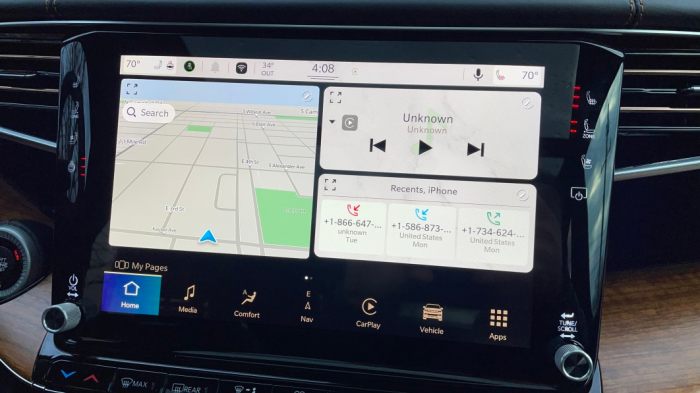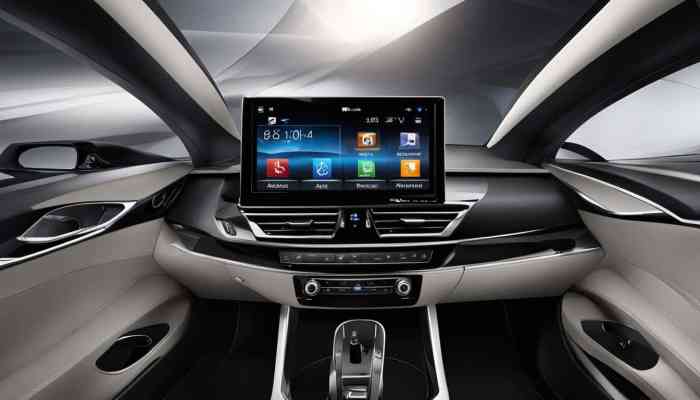The automotive landscape is rapidly evolving, and infotainment systems are at the forefront of this transformation. No longer mere radio players, these systems are becoming sophisticated command centers, integrating seamlessly with our digital lives. This comprehensive guide explores the top contenders for the best car infotainment systems expected to dominate in 2025, considering factors like user interface, features, connectivity, and overall user experience.
We’ll delve into the key players, emerging technologies, and what you can expect from the future of in-car entertainment and connectivity.
Key Features Defining Top Infotainment Systems in 2025
Several key features will distinguish leading infotainment systems in 2025. These go beyond simple touchscreen interfaces and encompass a more holistic and integrated approach to the driving experience.
Advanced User Interfaces (UI) and User Experience (UX)
Intuitive and visually appealing interfaces are paramount. Expect to see systems with highly customizable home screens, gesture control, and voice recognition that responds accurately and efficiently to natural language commands. Seamless integration with smartphone apps and personalized profiles will further enhance the UX. Think less tapping and more intuitive interactions.
Enhanced Connectivity and Seamless Integration
5G connectivity will be prevalent, enabling faster data speeds for seamless streaming, real-time navigation updates, and over-the-air (OTA) software updates. Expect seamless integration with popular smartphone operating systems (Android Auto and Apple CarPlay) and smart home devices. This interconnectedness will allow drivers to remotely control various aspects of their homes and manage their schedules while on the road.
Advanced Driver-Assistance Systems (ADAS) Integration
The lines between infotainment and ADAS are blurring. Leading systems will integrate seamlessly with advanced driver-assistance features, displaying crucial information such as blind-spot monitoring alerts, lane departure warnings, and adaptive cruise control settings directly on the infotainment screen. This integrated approach enhances safety and situational awareness.
Immersive Audio Experiences
High-fidelity sound systems will be standard, with many systems incorporating advanced audio technologies like Dolby Atmos or similar immersive sound processing. Expect options for personalized audio profiles and advanced equalization settings to tailor the listening experience to individual preferences.
Augmented Reality (AR) Navigation and Heads-Up Displays (HUDs)
AR navigation overlays directions onto a live view from the vehicle’s cameras, making it easier to navigate complex intersections or unfamiliar areas. HUDs project key driving information onto the windshield, minimizing driver distraction by keeping essential data within the driver’s line of sight.
Top Contenders for 2025: A Look at Leading Brands
Several automotive manufacturers are leading the charge in infotainment innovation. While specific models and features will vary, these brands consistently push the boundaries of in-car technology.
1. Tesla’s Infotainment System
Tesla’s vertically oriented touchscreen remains a benchmark, boasting a clean interface, powerful software, and continuous over-the-air updates. Their system’s integration with Autopilot and other advanced driver-assistance features sets it apart. However, the reliance on a single large screen has drawn some criticism.
2. BMW’s iDrive System
BMW’s iDrive system, known for its rotary dial controller, continues to evolve, incorporating a larger touchscreen and improved voice control. The system offers a balance between physical controls and touchscreen functionality, appealing to drivers who prefer a blend of both interaction styles. Their integration with digital services and apps is also strong.
3. Mercedes-Benz’s MBUX System
Mercedes-Benz’s MBUX (Mercedes-Benz User Experience) system is known for its sophisticated artificial intelligence and natural language processing capabilities. Its intuitive voice assistant can understand complex commands, making it easy to control various vehicle functions and access information without taking your hands off the wheel. The sleek design and high-quality visuals also contribute to its appeal.
4. Audi’s MMI System
Audi’s MMI (Multi Media Interface) system has a long history of innovation. Its latest iterations feature crisp graphics, intuitive menus, and excellent integration with smartphone apps. The system’s focus on driver assistance features and seamless connectivity makes it a strong contender.

Source: masterautocar.com
5. Polestar’s Android Automotive OS
Polestar utilizes Google’s Android Automotive OS, providing a familiar and user-friendly interface for Android users. This system offers direct access to Google services, including Google Maps, Google Assistant, and the Google Play Store for app downloads. This open-source approach allows for continuous improvement and expansion of functionalities.
Emerging Technologies Shaping the Future
Several emerging technologies will further revolutionize automotive infotainment in the coming years.
Artificial Intelligence (AI) and Machine Learning (ML)
AI and ML will enhance personalization, predictive capabilities, and voice recognition. Systems will learn driver preferences and anticipate needs, providing a more proactive and intuitive experience.

Source: glory4cars.com
Biometric Authentication
Expect to see more systems utilizing biometric authentication, such as facial recognition or fingerprint scanning, for enhanced security and personalized settings.
Improved Voice Assistants
Voice assistants will become more sophisticated, capable of understanding complex commands, nuanced requests, and contextual information. This will allow for safer and more hands-free control of various vehicle functions.
Frequently Asked Questions (FAQ)
- Q: What is the best infotainment system in 2025? A: There’s no single “best” system, as preferences vary. The ideal system depends on individual needs and priorities (e.g., ease of use, feature set, integration with other devices).
- Q: Will all cars have 5G connectivity in 2025? A: While 5G adoption is increasing, it won’t be universal in 2025. Availability will depend on the vehicle manufacturer, model, and regional network coverage.
- Q: How safe are in-car infotainment systems? A: Manufacturers prioritize safety. Many systems incorporate features designed to minimize distractions, such as voice control and simplified interfaces. However, it’s crucial to use these systems responsibly and avoid excessive interaction while driving.
- Q: What about software updates? A: Over-the-air (OTA) updates are becoming increasingly common, allowing for continuous improvements and the addition of new features without needing a dealership visit.
- Q: How much will these systems cost? A: The cost varies greatly depending on the vehicle and the specific features included. Advanced infotainment systems are often bundled with higher trim levels or offered as optional upgrades.
Conclusion
The automotive infotainment landscape is dynamic and exciting. The systems discussed here represent the cutting edge of in-car technology, offering a glimpse into the future of driving. As technology advances, expect even more seamless integration, personalized experiences, and enhanced safety features. The journey towards a truly connected and intelligent driving experience is well underway.
References
Call to Action
Stay informed about the latest advancements in automotive infotainment by following our blog and subscribing to our newsletter. We’ll keep you updated on the newest features, technologies, and trends shaping the future of driving.
Quick FAQs
What are the most common connectivity options in 2025 infotainment systems?
Expect widespread support for Wi-Fi, Bluetooth, Android Auto, Apple CarPlay, and potentially 5G connectivity for faster data speeds and improved streaming capabilities.
Will these systems offer over-the-air updates?
Yes, over-the-air updates are becoming increasingly standard, allowing manufacturers to improve system performance, add features, and address bugs remotely.
What about safety features integrated into infotainment?
Many systems will integrate safety features such as driver monitoring, emergency assistance, and advanced driver-assistance systems (ADAS) directly within the infotainment interface.
How much will these advanced systems cost?
Pricing will vary greatly depending on the vehicle and the specific features included. Expect higher-end models and luxury vehicles to offer the most advanced systems as standard or optional upgrades.
